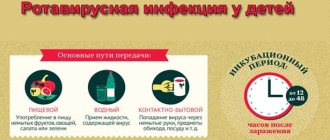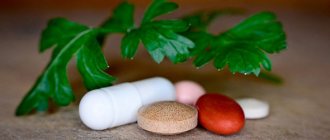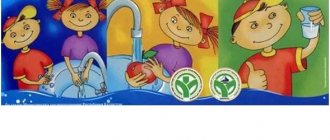The disease has several names: rotavirus gastroenteritis, stomach or intestinal flu, rotavirus infection. It is bacterial in nature. A child’s stomach ache after rotavirus is precisely because of bacteria. The incubation period lasts up to 5 days. An adult or child who has become infected with this disease is considered a carrier of the infection throughout the entire period from the moment of infection until complete recovery. The duration of the disease depends on the age and capabilities of the body. Adults tolerate it more easily; with proper therapy, they begin to recover on the seventh day.
How does the disease progress?
Despite the fact that rotavirus is considered an intestinal infection, it begins to infect the human body from the upper respiratory tract. It is observed more often in children under 5 years of age. It is during this period that the immune system is easily exposed to the virus, which is why children get this disease more often than adults. Rotavirus affects the mucous membranes of the intestines, stomach and duodenum, causing disorders and dehydration.
The virus, entering the child’s body, may not manifest itself in any way during the first 5 days (incubation period). Afterwards comes the stage of exacerbation and during this period the first signs begin to appear. The child begins to worry and cry for no apparent reason. It gets especially bad for him on the first day.
The pathogens are released along with the feces, so the sick person is considered a carrier of infection to all family members and others.
This lasts for a week and only after this period does it cease to be contagious. After treatment, recovery from rotavirus infection in children is required. Only after this can the child be released to school or kindergarten, but provided that he does not experience a relapse.
Consequences and complications after rotavirus
According to the Center for Epidemiology of Rospotrebnadzor, half of children after rotavirus infection experience an increase in liver size. Pneumonia was found in 6% of the subjects and iron deficiency anemia in 10%. Damage to the cardiac muscle tissue was observed in 18% of hospitalized children.
After recovery, the child is monitored for one month in order to begin treatment in time in case of complications.
Nocturnal or regular diarrhea
Vomiting and fever go away first, but diarrhea may persist and indicate various complications:
- An increase in bowel movements up to 5 times a day against the background of good health of the child with appetite and weight gain indicates a violation of the digestive mechanisms in the intestines. Ultrasound of the abdominal cavity, coprogram and stool analysis for dysbacteriosis are usually normal. If there are changes in the stool analysis for dysbiosis, this is a sign of intestinal dysbiosis.
- Prolonged watery diarrhea with a sour odor, colic, regurgitation, especially after feeding with milk against a background of normal body temperature and in the absence of signs of intoxication, indicate secondary lactase deficiency. In the coprogram, there is an increase in carbohydrates of more than 0.5% and Ph is less than 5.5.
Abdominal pain, weakness, loss of appetite, deterioration of skin, hair, nails
Such manifestations are observed in the case of malabsorption, that is, impaired absorption of nutrients due to damage to the intestinal villi. The child may not sleep well and even lose weight.
Malabsorption is also manifested by heterogeneous diarrhea with undigested lumps of food.
Peeling and rash on the skin
May be a sign of pseudo-allergy. It is also characterized by regurgitation, frequent cloudy mucous stools sometimes streaked with blood, bloating and flatulence in the tummy. At the same time, an allergen test indicates the presence of antibodies in only 15% of examined patients. A coprogram (stool analysis) shows an increased content of mucus, intracellular starch, leukocytes, eosinophils and neutral fat.
Symptoms of intestinal flu in adults
An adult suffers from this disease much easier. His symptoms are not so clearly expressed. In some cases, the disease does not show any symptoms at all. In an adult, the disease can be recognized by the following symptoms:
- lack of appetite;
- my stomach hurts;
- diarrhea;
- light-colored stool, foamy and abundant, with the presence of undigested food, a pungent and sour odor.
Vomiting in an adult most often does not occur at all. As you can see, the symptoms of intestinal flu can be easily confused with traditional poisoning. Therefore, it is very important to understand the reasons for the appearance of these symptoms, and if the diagnosis confirms the presence of the infection in question, then it is very important to know how to properly treat the disease, and even more important, how to recover from rotavirus infection.
Normal poisoning lasts no longer than three days, rotavirus infection lasts up to five days, and sometimes up to eight.
First aid for rotavirus infection
Regardless of whether this disease has developed in a child or an adult, care must be taken to provide timely first aid, which includes a set of such measures:
- The sick person should be in a horizontal position or in a sitting position.
- If the body temperature is more than 38 degrees, it is necessary to use antipyretics. Since rotavirus causes frequent and profuse vomiting, antipyretic drugs are best used in the form of rectal suppositories.
- To treat diarrhea, normalize water-salt balance and prevent dehydration, after each episode of vomiting or defecation, a sick person needs to drink at least 1 glass of Regidron solution.
- To combat concomitant digestive disorders and recover from rotavirus infection, it is necessary to take one of the sorbents (activated carbon, Polysorb or Enterosgel), Smecta or analogues of this drug. Also, taking enzymatic preparations (Mezim, Pancreatin) and prebiotics is indicated.
The diet after rotavirus infection excludes the consumption of dairy and fermented milk ingredients, as well as foods containing large amounts of carbohydrates.
Rotavirus in children
Signs of the disease in children are pronounced, and from the first days of the development of the disease:
- the child does not eat anything;
- he is vomiting;
- the child is lethargic, sleepy, restless, does not want to go for walks
- there is a rash on the skin;
- the stool changes consistency and color: on the first day it is yellow and liquid, on the second and subsequent days it is yellow-gray.
You may experience redness of the throat, runny nose, high temperature and it is very difficult to bring it down.
Very young children, unlike adults, cannot explain what exactly is bothering them, so they become overly nervous and whiny. A clear sign of the presence of rotavirus can be considered rumbling in the stomach and lethargy. Children under one year old at this moment press their legs to themselves and cry a lot.
Features of treatment of a patient with rotavirus infection
Patients with severe symptoms are treated in a hospital. In cases where the disease is not severe, the patient can be treated on an outpatient basis, but under the strict supervision of doctors. Therapy does not involve taking antibacterial drugs, because rotavirus is insensitive to antibiotics. The doctor does not prescribe them also because antibiotics are considered broad-spectrum drugs, in addition to killing pathogenic bacteria, they also destroy beneficial intestinal flora. All this leads to disturbances in the immune system and the rapid spread of the virus.
Antibacterial medications are prescribed only in cases where the virus infection occurs against the background of a bacterial infection, for example, when a child develops a cough after rotavirus.
Detoxification
For this purpose, patients diagnosed with intestinal flu are prescribed:
- Smecta. For children - in the first 3 days, take 4, then 2 sachets per day. The therapeutic course is 5-17 days. The composition of the sachet is diluted in 0.5 cups of water. Adults – up to 6 sachets per day. Duration of treatment is 5-7 days.
- Enterosgel. Children: a tablespoon three times a day. The product should be taken 60 minutes before meals with plenty of liquid. Adults 1.5 hours, l. also three times a day before meals.
It is also useful to take activated carbon. The drug cleanses the body well of pathogenic microbes and toxins.
Rotavirus infection in a child: you need to act quickly!
Viral diarrhea (rotavirus, norovirus) is a widespread infection among children. Their epidemics break out in autumn and winter, mainly in children's groups. The intestinal infection most familiar to most parents is rotavirus. Infection occurs due to the virus entering the oral mucosa (through dirty hands, poorly washed fruits and vegetables, or failure to comply with food storage conditions). The airborne route of transmission of rotavirus has not yet been proven.
Rotavirus and norovirus in children can be “recognized” by the following symptoms:
- indomitable vomiting up to 10-15 times a day;
- severe nausea;
- frequent loose, watery stools;
- abdominal pain;
- temperature rise to 39 degrees and above.
These are the main signs of rotavirus in children. The disease has an acute onset, while in case of poisoning the symptoms develop gradually. There are often cases when a viral infection occurs without diarrhea, but only with repeated vomiting. By the way, this is most typical of the symptoms of norovirus. In case of poisoning, as a rule, loose stools are observed for several days.
How dangerous is rotavirus in children? Like any other intestinal infection, rotavirus is dangerous because it can cause dehydration: the body loses fluid due to repeated vomiting and frequent watery stools. The younger the child, the more dangerous this condition is for him. You need to act quickly! Otherwise, hospitalization in an infectious diseases hospital cannot be avoided.
How to help a child with rotavirus?
Replenishing fluid loss and taking medications to stop diarrhea are the most important things when treating any intestinal infection! It is necessary to take measures immediately, as soon as possible, even before the doctor arrives.
- How and with what to replenish fluid loss? Plain water is not suitable for this purpose, because with diarrhea, not only water is lost, but also salts, the balance of which in the body is extremely important. Therefore, to feed children it is necessary to use special solutions that are balanced in composition. Numerous studies have shown that for oral rehydration in children it is necessary to use solutions with reduced osmolarity (that is, with a reduced salt concentration) up to 250 mOsm/l. It is these solutions that improve the absorption of liquid, reduce the load on the child’s kidneys and reduce the total volume of liquid required for drinking.
Adiarin® Rehydrocomplex® is a compositionally balanced mixture of glucose and electrolytes that complies with WHO recommendations for rehydration solutions*. This is a hypoosmolar solution (245 mOsm/l). The great advantage of the product is that it contains zinc, which helps reduce the duration of diarrhea and strengthen local immunity during viral infections.
Adiarin® Rehydrocomplex® allows you to prevent the development of dehydration, quickly restore the water-salt balance and avoid serious consequences. The drug is approved for use in children from birth; it has a pleasant, slightly salty taste that does not provoke vomiting, but on the contrary, reduces the feeling of nausea. For this reason, when using Adiarin® Rehydrocomplex®, feeding children at home is almost always successful.
It is recommended to take the drug from the moment the first symptoms of infection appear until vomiting and diarrhea completely stop. If vomiting occurs, you should wait 10-20 minutes and then repeat the solution. If you give the solution in small portions, the body will still absorb it, even despite vomiting. Taking large volumes of solution at once should be avoided, as this may cause vomiting.
How to stop diarrhea and stop fluid loss?
Use a proven remedy for diarrhea, suitable for the whole family, even for very young children (from 3 months) - Adiarin® based on a natural substance - tannat gelatin.
Gelatin tannate creates a special film on the surface of the intestinal mucosa, which helps protect the mucous membrane from the action of viruses and their toxins. The product begins to “work” quite quickly and allows you to reduce the frequency of stools within the first 12 hours.** Adiarin® restores intercellular connections destroyed by the virus and inflammation and stops further loss of water and electrolytes. Taking it helps relieve nausea and abdominal pain.
Often, parents caring for a sick child experience great difficulty in getting their child to take medicine. Children refuse to take it because of the unpleasant taste or large volume. There are no such difficulties with Adiarin®: it has a neutral taste and a small dose: the finished solution fits in a spoon!
Rotavirus always disrupts the normal intestinal microflora and negatively affects immunity, digestion and health in general. How to restore the intestinal microflora after rotavirus?
- Adiarin® Probio is ideal for this - a special combination of the most studied strains in pediatrics: lactobacilli LGG® and bifidobacteria BB-12®.
Adiarin® Probio strains have a proven antidiarrheal effect.
They help increase the production of antibodies during rotavirus infection, actively protect the microflora from the negative effects of antibiotics, stimulate and enhance the immune response of the intestinal mucosa. Their use makes it possible to effectively restore the intestinal microflora in adults and children from birth after rotavirus. The product is available in the form of oil drops in a convenient bottle with a dropper. It can be taken alone or added to food/breast milk or drinks during or after meals. 1 dose (6 drops) contains 1 billion live bacteria. A single dose per day is enough to fully restore the intestinal microflora in a child after a rotavirus infection.
Thus, Adiarin® drugs offer an integrated approach to the treatment of rotavirus infection and elimination of its consequences: they allow you to stop diarrhea, normalize water and electrolyte balance, restore intestinal microflora - that is, do everything for a quick recovery.
* Mazankova L.N. et al. / Modern pathogenetic therapy of acute intestinal infections in children. Children's Infections, 2012, 2: 43-7.
** Çağan E, Ceylan S, Mengi Ş, Çağan HH./ Evaluation of Gelatin Tannate Against Symptoms of Acute Diarrhea in Pediatric Patients / Medical Science Monitor: International Medical Journal of Experimental and Clinical Research. 2017;23:2029-2034.
THERE ARE CONTRAINDICATIONS. BEFORE USE, YOU MUST READ THE INSTRUCTIONS FOR USE AND/OR CONSULT WITH A SPECIALIST
Restoration of intestinal microflora after rotavirus infection
To restore the natural microflora, the patient is prescribed Maxilak, Bifidumbacterin, Linex. Taking medications is indicated when the acute stage of the disease has already passed.
It is necessary to restore the intestinal microflora in time so that the person who has recovered from the disease does not develop dysbacteriosis.
Maxilac
Belongs to the group of combined drugs. The product contains pro- and prebiotics. Indicated for both children and adults. Helps in cases where, for example, constipation is observed in a child. Available in sachets, the contents easily dissolve in water. Take one sachet twice a day for 14 days.
Bifidumbacterin-forte
Available in capsule or powder form. Contains beneficial bifidobacteria. Children are advised to take a sachet or capsule three times a day; for adults, the dose is doubled. Capsules should be swallowed whole with water. Dilute the powder in liquid and take with food.
Linex
It consists of fermented milk bacteria, well restores the natural microflora in the intestines, helps in cases where the child does not poop or, conversely, has diarrhea. Children should take one capsule three times a day, adults – two capsules and also three times a day.
Characteristics of the disease
This pathology belongs to the group of infectious diseases caused by viruses. In the practice of pediatricians, this disease is one of the most common. The source of rotavirus are sick people or virus carriers. The mechanism of transmission of pathogens is fecal-oral, but transmission of infection can occur through food and drinking water. Clinical symptoms of rotavirus infection develop when a virus of the genus Rotavirus containing RNA enters the lumen of the gastrointestinal tract. It is important to take care of the rapid recovery of the intestines after rotavirus infection.
Clinical symptoms
From the moment rotavirus enters the body until the first symptoms appear, the so-called incubation period lasts from 12 hours to 5 days. In the symptoms of rotavirus infection, manifestations of intoxication and acute gastroenteritis come to the fore. Respiratory manifestations of rotavirus infection may or may not be present. In all cases, this disease has an acute course and can occur in mild, moderate and severe forms. In addition to intoxication of the body and gastroenteritis, the clinical picture of rotavirus infection includes the following symptoms:
- increase in body temperature to 38-39 degrees;
- nausea and vomiting;
- abdominal pain;
- bowel disorders in the form of diarrhea;
- foamy, watery stools that are green or yellow and have a strong odor;
- increased gas formation in the intestines (flatulence);
- general weakness and malaise;
- pale skin;
- headache.
In severe cases, episodes of loss of consciousness and weight loss may occur. Respiratory manifestations of this infection include a runny nose, mild sore throat, conjunctivitis and dry cough.
Which doctor treats intestinal flu?
It is prohibited to independently establish a treatment regimen and select medications. This should be done by a pediatrician for children and a local therapist for adults (for mild forms). In fact, the disease is treated by an infectious disease specialist and a gastroenterologist. After the main therapy, you need to undergo a recovery course. During this period, you should contact a nutritionist.
Diet and its role in the treatment of rotavirus infection
Diet after rotavirus helps restore the intestines:
- Exclusion from the diet of milk and dairy dishes, except maternal milk, if the child is too small. Temporarily replace it with plain water or herbal teas. With mint - to eliminate nausea, with ginger - if the stomach hurts after rotavirus in a child.
- Dishes should be light and healthy, for example: soups, broths, mashed potatoes, vegetable juices. If the child is on the mend, you can add yogurt to the menu to restore intestinal flora.
- Adults should follow diet No. 4. It includes the consumption of crackers from white breads, fish, broths cooked in water, semolina and rice porridge. Salt should be completely eliminated during treatment.
- Recommended drinks include: plain water, decoctions and teas of blackcurrant or raspberry, cocoa not with milk, but with water.
- After diarrhea decreases, when the child’s rash after rotavirus goes away, you can include vegetable dishes, soups, seasonal fruits, vegetables and berries in the diet.
- During the period of therapy, you should completely avoid barley and pearl barley porridge, cabbage (white cabbage), pasta, garlic, smoked meats, pickles, onions, fatty foods, carbonated drinks, hot seasonings, and coffee.
What can a child eat after rotavirus?
The basic principle of nutrition during illness and for 1-2 weeks after rotavirus is the exclusion of dairy products and foods that are difficult to digest. These include broths, all fresh fruits and vegetables, canned foods, carbonated, spicy and fried foods. It is advisable to reduce the amount of sugar and sweet drinks. And increase the amount of salt. Babies can be fed salted foods from one year of age. Add no more than 1 gram of salt per day.
Be sure to continue breastfeeding during illness. From the mother's milk, the baby receives water and antibodies that help cope with the disease. Artificial babies are transferred to lactose-free or low-lactose formulas.
Materna Soy lactose-free soy mixture is suitable for babies from birth. Made in Israel.
Read more about the menu for a nursing mother and child with rotavirus in our article.
Why milk should not be used for rotavirus infection
Rotaviruses damage the villi of the small intestine and reduce the production of the enzyme responsible for the digestion of milk. Therefore, to avoid unnecessary stress on the intestines, dairy products are excluded. Doctors prescribe enzymes for breastfeeding babies to support digestion.
Preventive actions
First of all, treat the apartment with a disinfectant, strictly monitor personal hygiene, wash your hands:
- before and after meals;
- before and after going to the toilet;
- upon returning home from the street.
In addition to hygiene, you need to monitor the freshness, cleanliness and quality of food - apples, for example, should not just be wiped, but washed. Treat toys if there are several children and one of them is sick.
Buy dairy products fresh and in stores, not at random outlets.
Is it possible to get re-infected with the virus?
You can become infected after recovery and repeatedly. Children are more often infected. Then, as they grow older, their gastrointestinal tract becomes more resistant to bacteria. That's why adults get sick much less often than children. True, much depends on the body’s reserve forces and the individual characteristics of the digestive system.
Vaccination against rotavirus
An effective and appropriate method of prevention against rotavirus is vaccination. Vaccinated children develop lasting immunity to the virus. Vaccination is carried out in two stages with an interval of 4 weeks. Available in drop form, taken orally under medical supervision.
The rotavirus vaccine can be combined with other vaccinations (the closest ones according to plan). It does not in any way affect the effectiveness of other medications, so it cannot cause side effects.
There are a number of contraindications to vaccination:
- Allergic reaction (rash) after the first dose of the drug.
- Intussusception.
- Defects in intestinal development.
The vaccine is well tolerated by children and does not cause side effects, with the exception of individual intolerance to the drug. Vaccination is not considered 100% protection, but its effectiveness remains high for a long time.







